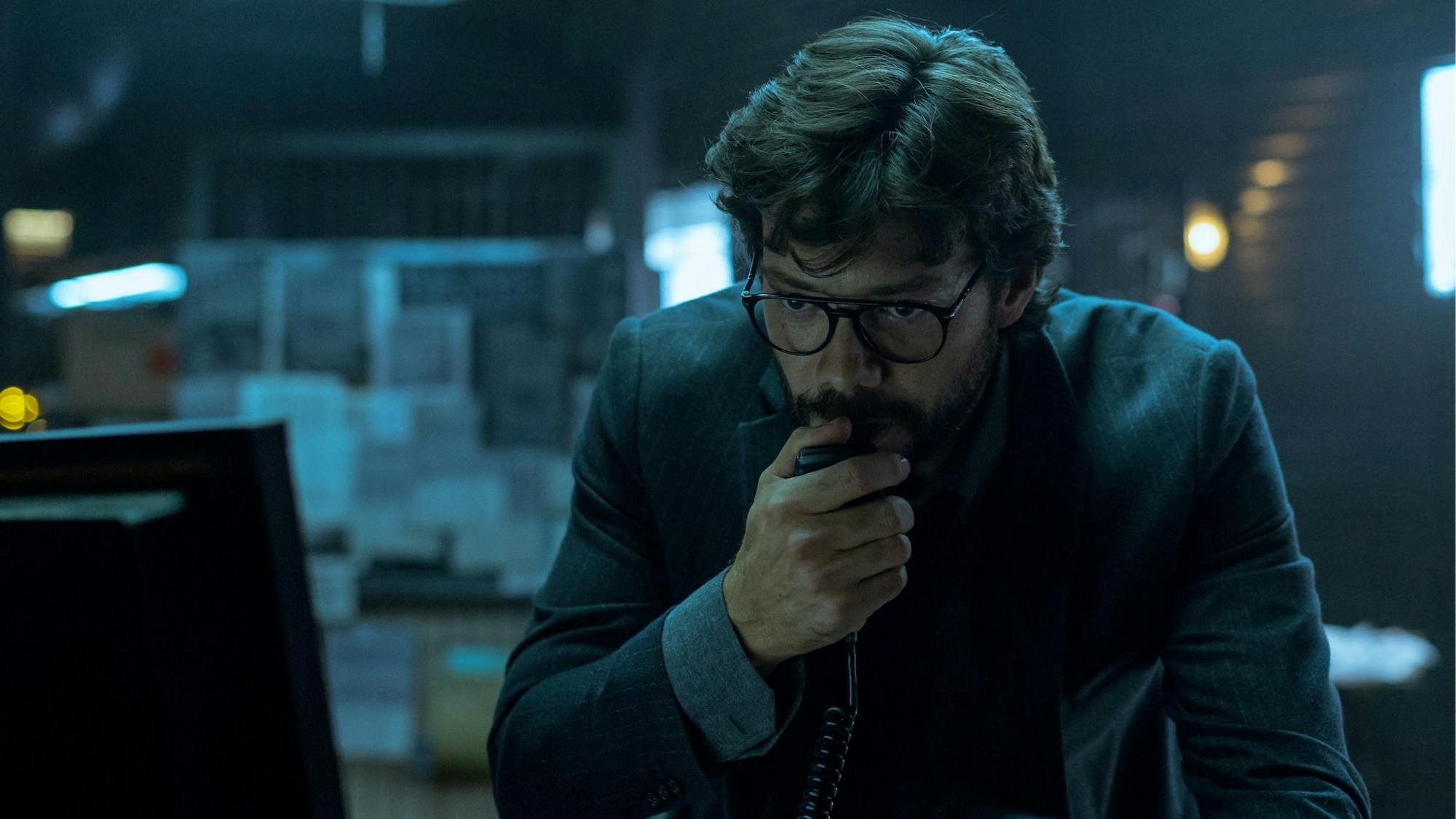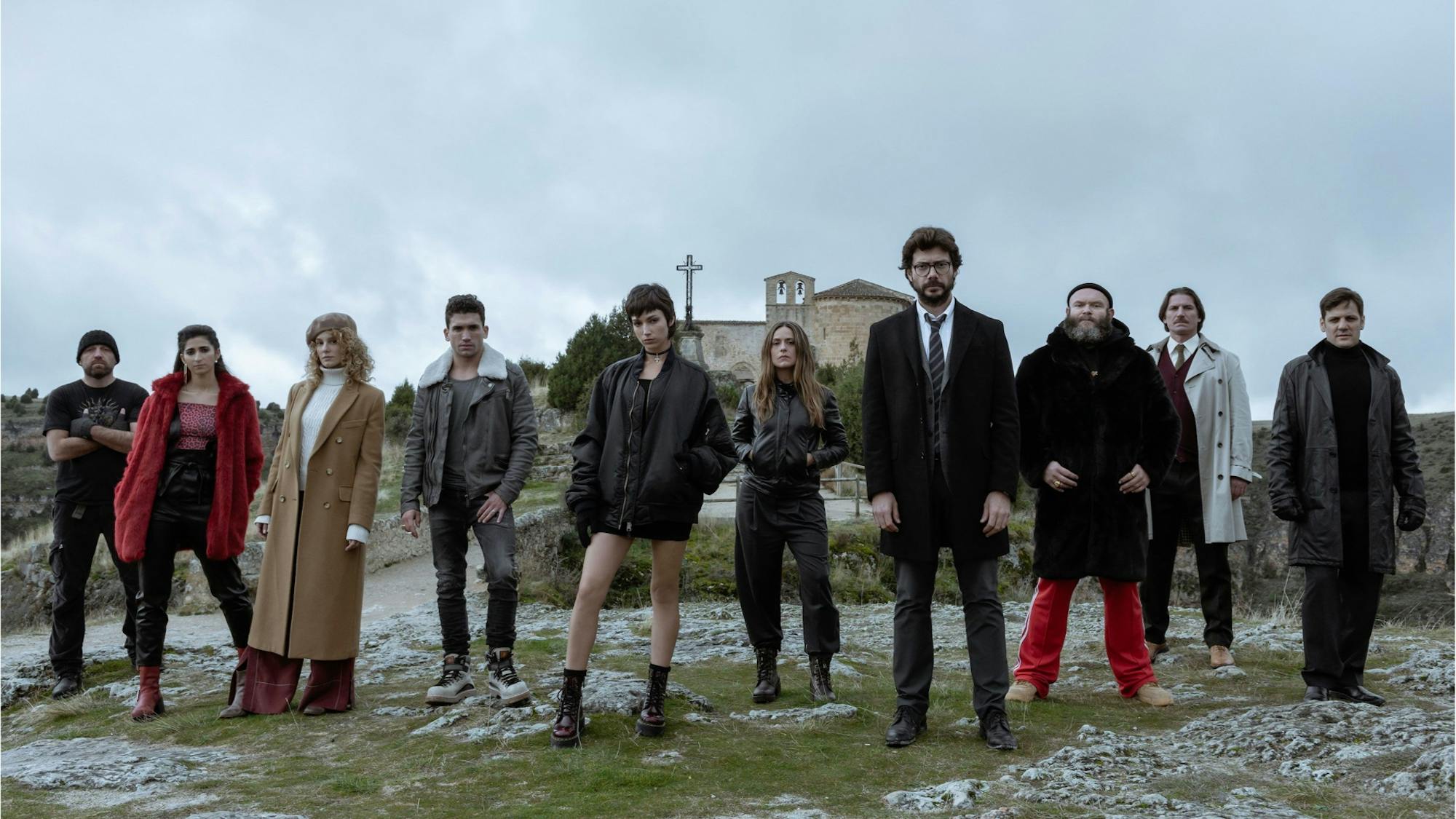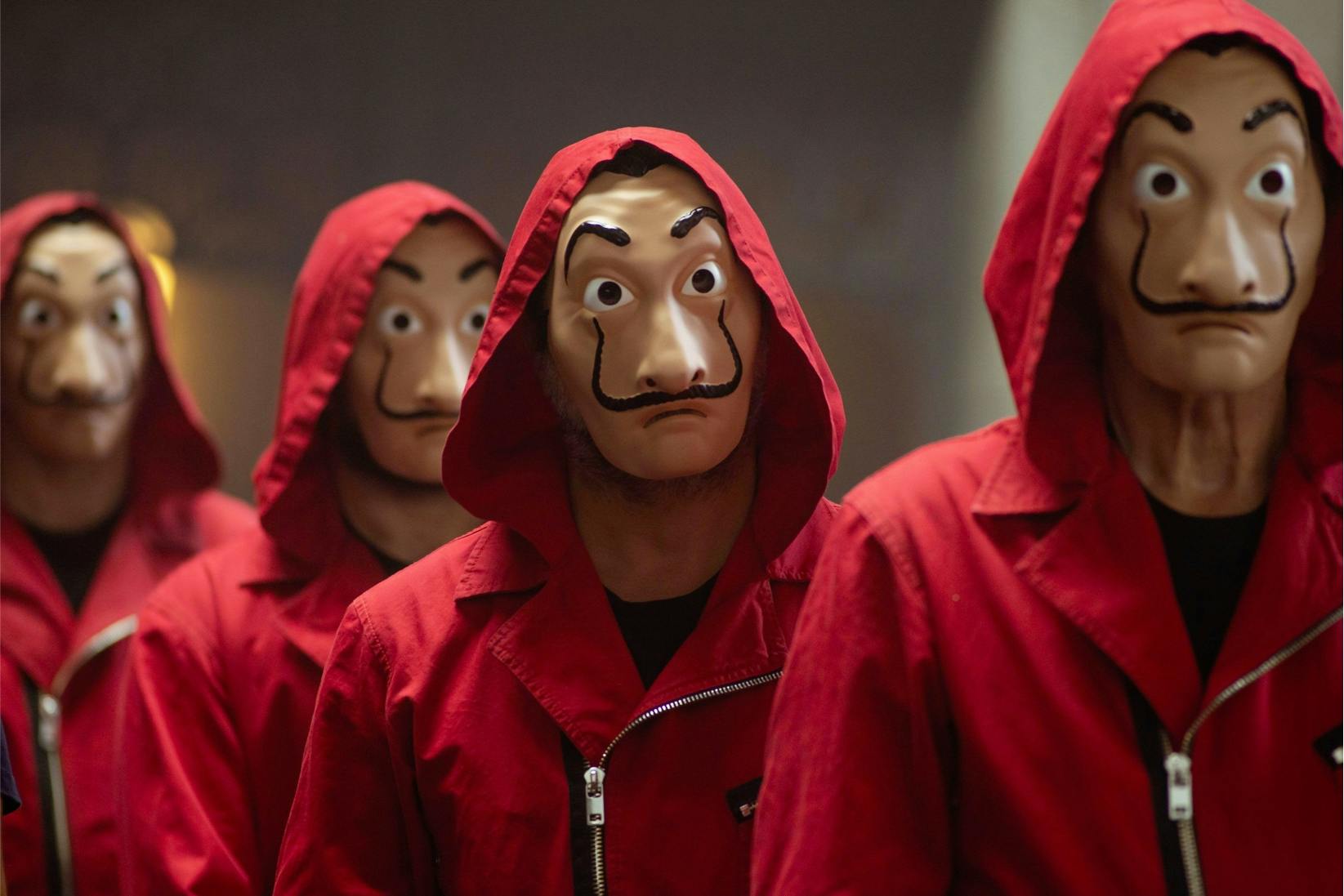As the global phenomenon nears its end, the cast and creators say farewell to La casa de papel.
La casa de papel is a story of beating the odds. Back in 2017, after the show’s second season had aired on Spanish TV network Antena 3, it was in danger of being cancelled due to waning viewership. Then, just like a twist in a script, La casa de papel saw a reprieve: Netflix acquired the global streaming rights. The Spanish heist drama became an instant streaming hit — that summer it became not only the most-watched non-English-language series on the platform, but also one of Netflix’s most-watched series overall. Through Netflix, La casa de papel has been introduced to audiences worldwide and released three new seasons. The most recent, Part 5, began on September 3 and will release its final five episodes on December 3. Today, the scripted crime drama, known as Money Heist to English-language viewers, has been enjoyed by millions of viewers — 65 million member households chose to watch Part 4 alone in its first four weeks — and lauded critically, including a best drama series prize at the 46th International Emmy Awards.
La casa de papel follows a rag-tag group of Spanish thieves as they undertake heists that target sources of institutional wealth; in its first two seasons, the Spanish Royal Mint, and in its third, fourth, and fifth, the Bank of Spain. Plotted out over years and masterminded by a man known only as “the professor,” the heists are as complex as the entanglements that occur between their willing and not-so-willing participants — the hostages. Fans around the world have lauded the series for its smart and complex plots, deep character portrayals, and its fresh take on the well-worn heist drama format.

Helsinko (Darko Perić) and Nairobi (Alba Flores)
“Heist movies are a genre in themselves,” says Jesús Colmenar, the show’s director and executive producer, “That was a powerful weapon for the start of La casa de papel. The viewer knows the rules of the game, so the viewer will get into the story quickly, right? And what we really have prepared for them are the twists and turns, within the rules of the game, so that once they’re inside, they will find a new story.” Along with character-driven storylines and dramatic twists, La casa de papel employs vibrant visual effects and all the thrill you’d expect of a heist show. The result is a major artery for the series: engrossing detail, including tight close-ups that place the viewer near the heartbeat of the physical action as much as the internal machinations inside each character’s psyche.
Part of the show’s appeal is that it addresses issues of power and wealth that have been brewing since the economic collapse in 2008. Series creator, showrunner, and executive producer Álex Pina’s inspiration for the show’s anti-capitalist themes came from the anti-austerity movement in Spain, often referred to as the “15-M,” which began in 2011 with a series of demonstrations, protests, and rallies against high unemployment rates, welfare cuts, and corruption. “After the Lehman Brothers crisis, people were upset, skeptical, and they did not have faith in institutions, in governments, in their banks,” Pina recalls. “The 15-M demonstrations in Spain had led a lot of people to take to the streets.”

El Profesor (Álvaro Morte)
To complement its theme, the series revived a late 19th century Italian protest song with a long history. “We were looking for an iconic sound,” Pina says of the “Bella Ciao” track. “We needed a soundtrack that sounded like an anthem and that was associated with freedom and resistance. Suddenly one of the writers, Javi, came in with that song, and we said: ‘This is it!’”
“Bella Ciao” was originally sung in the late 1900s by female rice paddy laborers in Northern Italy who were frustrated with working conditions. The song was later taken up by the Italian anti-fascist resistance in the early 1940s and since then has been adapted for various movements to protest inequities. When the show aired, social media accounts worldwide lit up with communities of fans expressing their connection to its emerging themes and the exploration of an elaborate bank heist as a symbol of a bigger picture. Audiences relished the rebellion as they rooted for the unruly onscreen mavericks of La casa de papel.

Denver (Jaime Lorente), Malina (Belén Cuesta), and Tokio (Úrsula Corberó)
And what bank heist drama is complete without an eye-catching aesthetic? Thieves and hostages are both costumed in cherry-colored jumpsuits with exposed zippers and don wide-eyed, mustachioed masks to hint at a “mad genius,” according to Pina. “Dressing all the characters with the iconic red jumpsuits they use in the heist was a huge challenge,” says Carlos Díez Diez, La casa de papel’s costume designer. “That was an idea that came from the initial script by Pina. The jumpsuit had different iterations and was redesigned from the first and second parts to the third, fourth, and fifth.” The bold look has stayed with fans of the series and even made its way into real-life application; in July of 2020, workers at a shuttering Nissan factory in Spain protested the loss of their jobs dressed in the iconic masks and red jumpsuits of La casa de papel, singing a version of “Bella Ciao.”
Actor Luka Peroš, who plays Marseille, reflected on the experience of shooting the final season of the beloved and impactful show, “My colleagues were always like family, and the last nine months of shooting were insane. I enjoyed it. It was also emotional. We were told it was the last season and everyone was preparing for that. For my other colleagues who were on this show longer, it was an even bigger rollercoaster. The audience is also going to feel a lot of these emotions, from sadness to laughter to joy and happiness and not all in that order. The world is going to experience that with us.”

Bogotá (Hovik Keuchkerian), Nairobi (Alba Flores), Mónica Gaztambide (Esther Acebo), Denver (Jaime Lorente), Tokio (Úrsula Corberó), Raquel Murillo (Itziar Ituño), El Profesor (Álvaro Morte), Helsinki (Darko Perić), Marsella (Luka Peroš), and Palermo (Rodrigo de la Serna)
